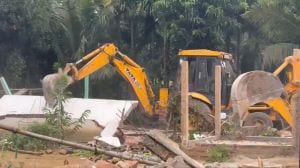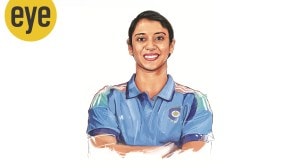More students taking tuitions,says study
In a telling commentary on the quality of education in Indian schools,Prathams latest report on elementary education has revealed that the percentage of children taking paid tuition....
In a telling commentary on the quality of education in Indian schools,Prathams latest report on elementary education has revealed that the percentage of children taking paid tuition has increased for every class between 2007 and 2009,more markedly so in government schools and most significantly in West Bengal. In a more worrisome finding,the report says that half of Indias rural schoolchildren are at least three grades behind in terms of learning achievements.
The Annual Status of Education Report (ASER) 2009,released on Friday,reveals that among government schoolchildren,the percentage going to tuition class increases steadily as children move into higher classes: from 17.15 per cent in Class I to 30.8 per cent in Class VIII. The situation is no better in private schools,with almost a quarter (23.3 per cent) taking private tuitions in Class I. The figure stands at 29.8 per cent for Class IV students. The study covered 16,291 villages,3,38,027 households and 6,91,734 children.
The report states that children in West Bengal are the most intensive users of paid tuition in the country; more than half of all Class I and almost 90 per cent of all Class VIII government schoolchildren take some kind of paid tuition. The incidence of tuition in Bihar and Orissa is also high,ranging from about one-third students in Class I to over half in Class VIII.
There was some good news from Bihar,which has registered a huge drop in the number of girls who don’t go to school from 17.6 per cent (age group 11-14 years) in 2006,the figure has dropped to just 6 per cent in 2009. Chhattisgarh,Rajasthan,Orissa and J&K have also improved their tally. However,Andhra Pradesh and Punjab have shown an increase in percentage.
The overall percentage of children (6-14 years) who don’t go to school has also dropped from 4.3 per cent in 2008 to 4 per cent in 2009. As far as attendance is concerned,only 60 per cent students in Bihar attend school on any random day as compared to over 90 per cent in southern states. Rajasthan,UP,Jharkhand,Orissa and Mandhya Pradesh also need to show better attendance ratios,says the ASER.
The percentage of Class I students who can recognise letters or more has increased from 65.1 per cent in 2008 to 69.8 per cent in 2009. In terms of number recognition,there has been an increase from 65.3 per cent in 2008 to 69.35 per cent in 2009.
The results for higher classes in primary schools,however,are not so encouraging. Half of the children in rural India are at least three grade levels behind where they need to be, says the report. It further notes that the situation is worrisome when it comes to Maths,with students ability to solve division problems in Class V declining from 41 per cent in 2007 to 36 per cent in 2009.
On basic amenities,the report says just over 50 per cent of government schools have usable toilets,four out of 10 government primary schools do not have separate toilets for girls,12-15 per cent girls toilets are locked and just 30-40 per cent are usable.



- 01
- 02
- 03
- 04
- 05




























